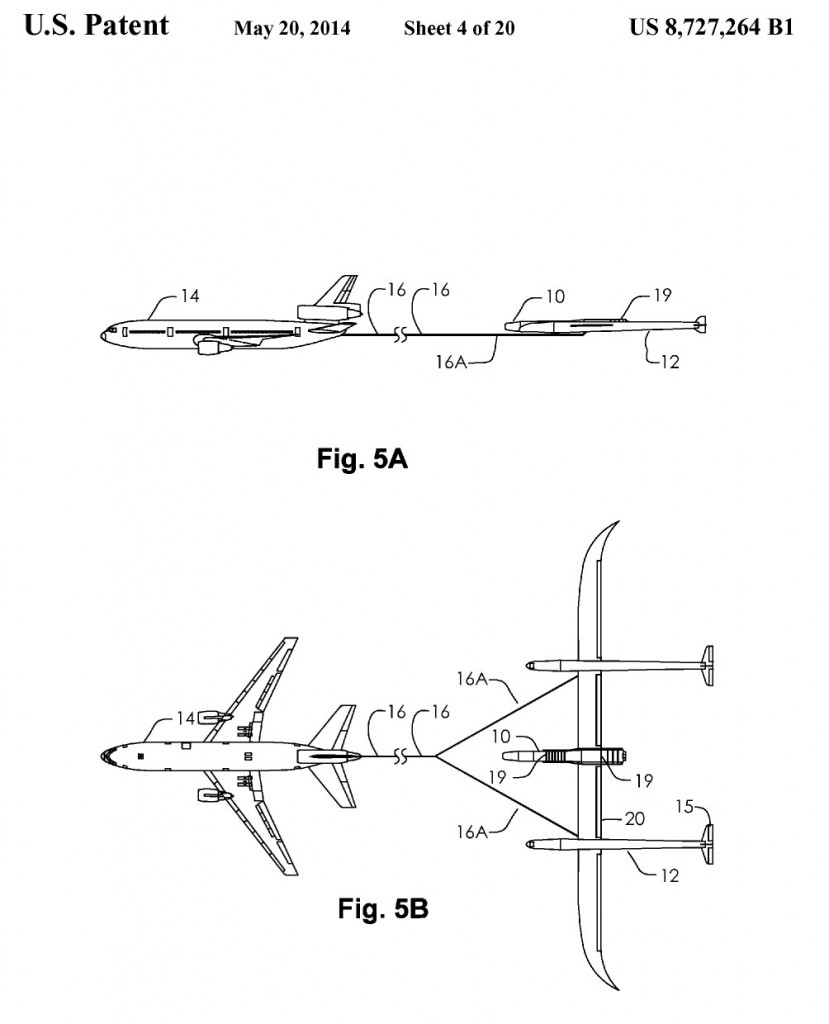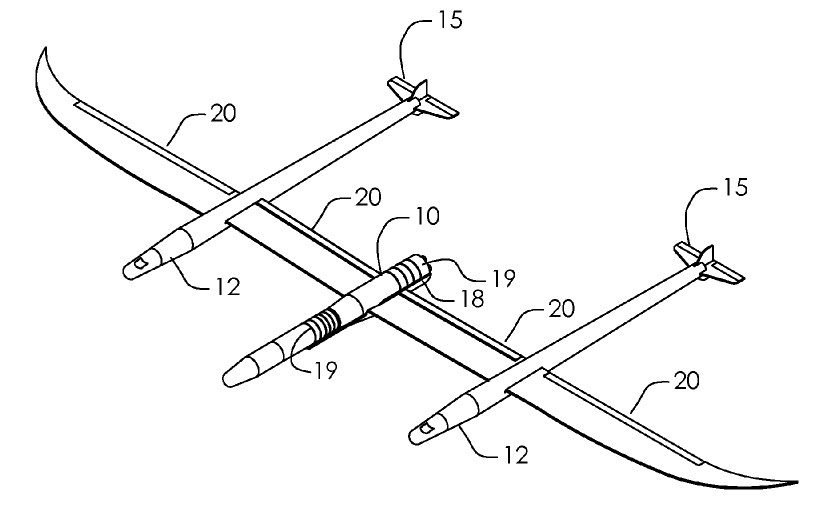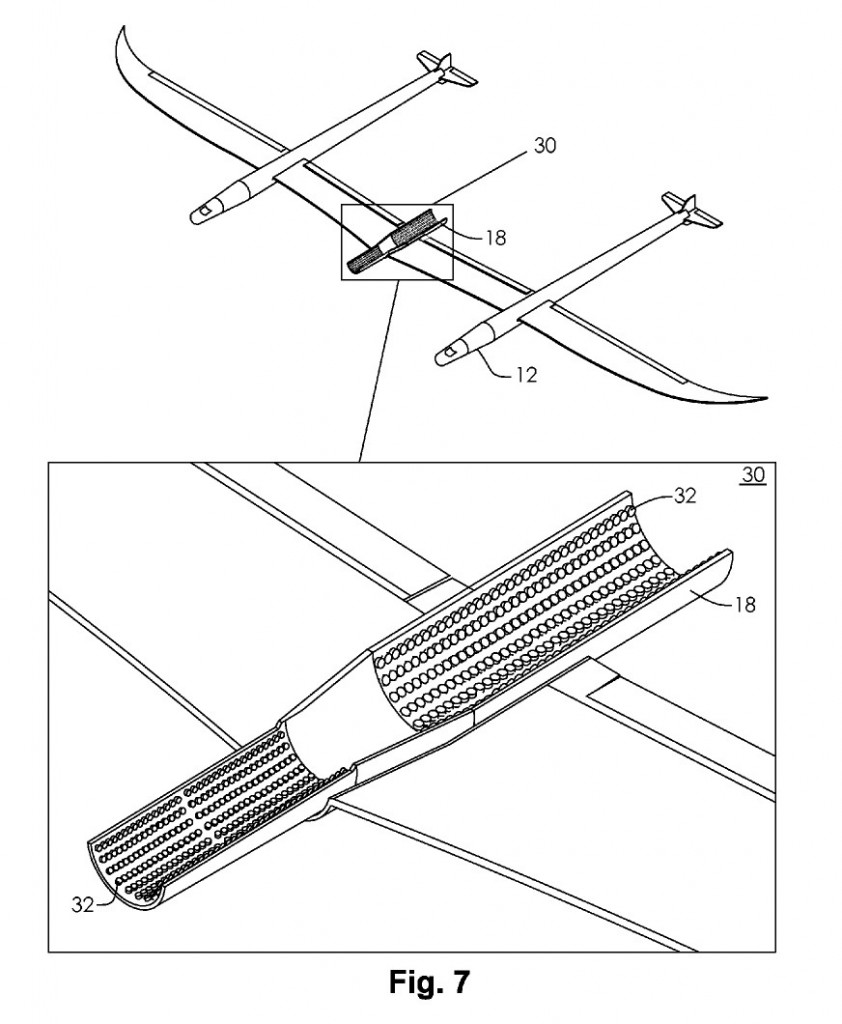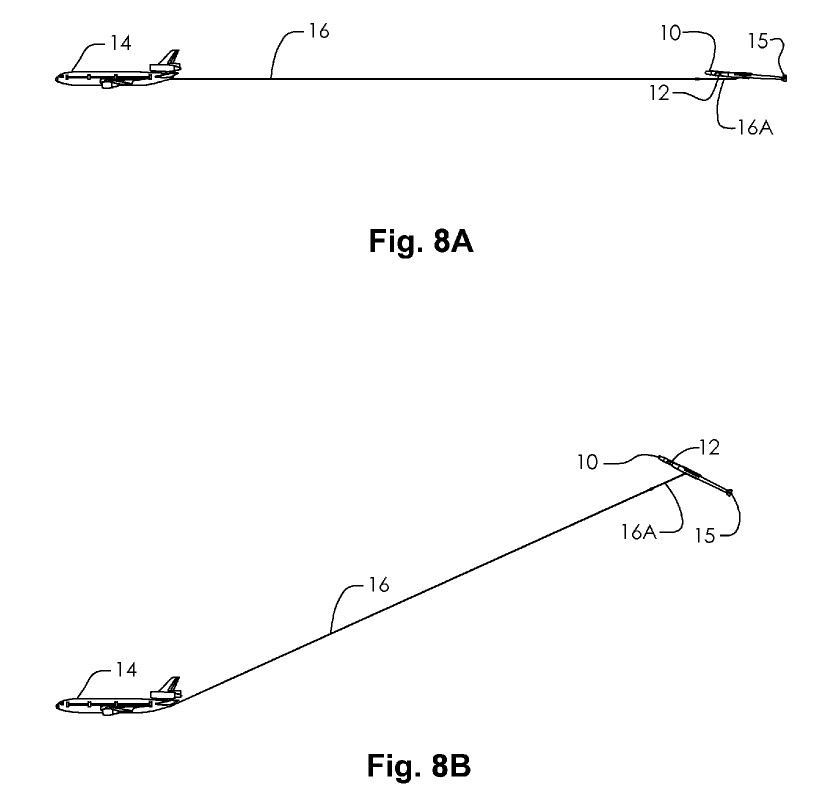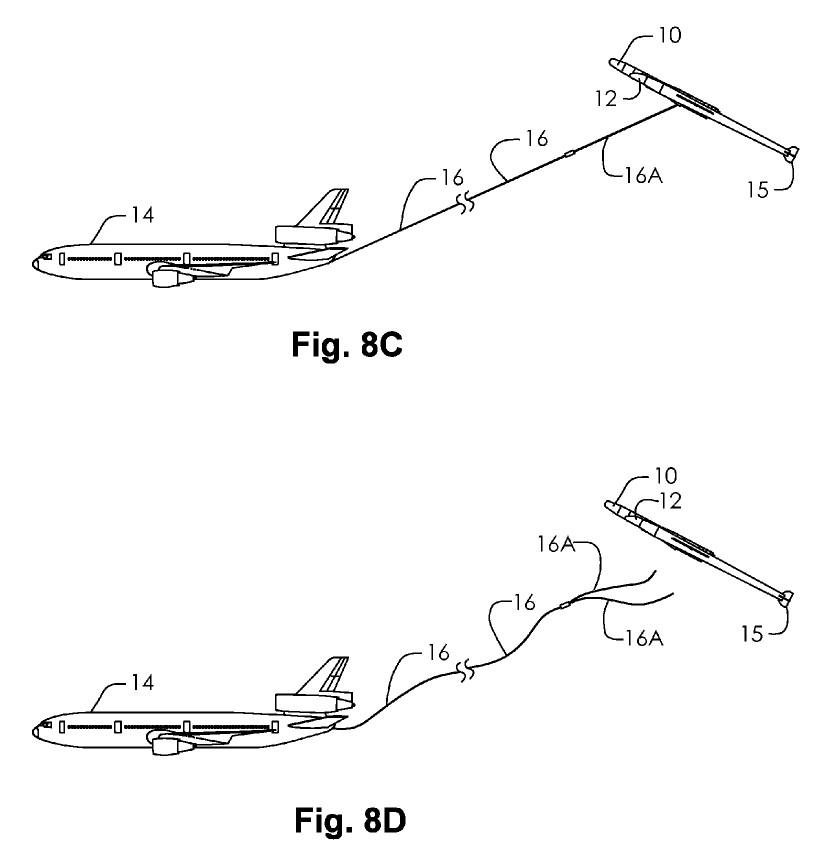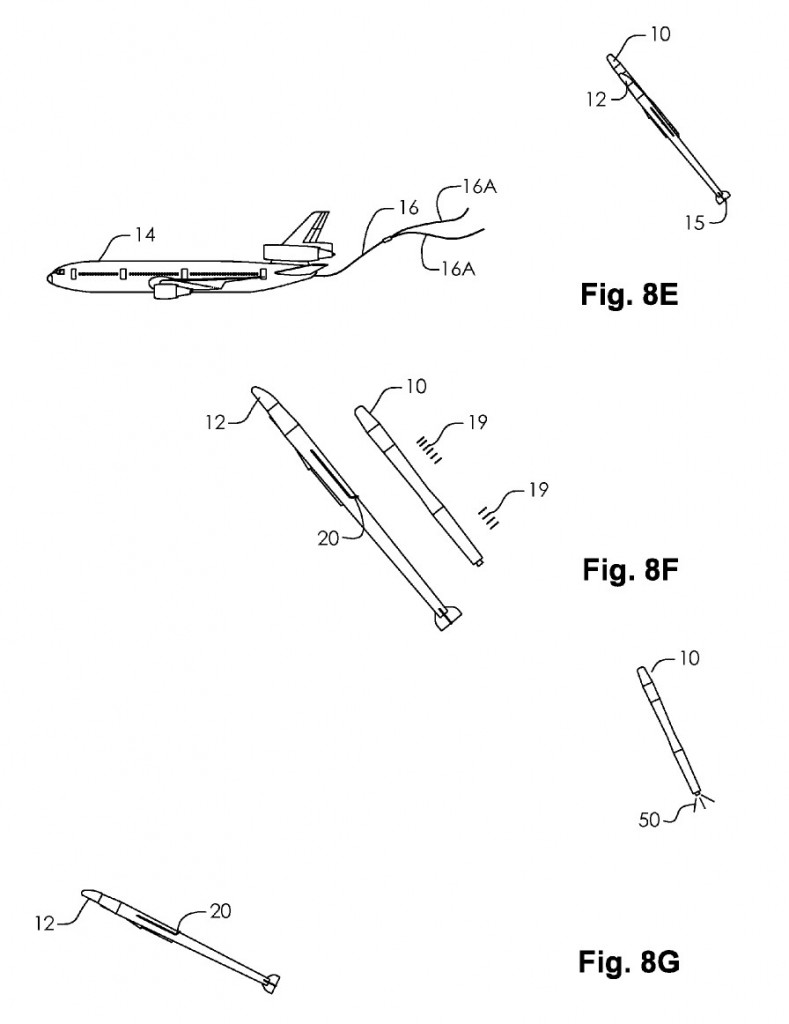NOTE: this is the first official “PDF Review.” The idea is to present interesting online resources for those interested in the sort of aerospace oddities that you can find in the pages of Aerospace projects Review. This little project is supported through my Patreon campaign; at current levels, I’ll post two such reviews per month. If you’d like to see more, or just want to contribute to help me along, please consider becoming a patron.
——————-
Dynamic tow maneuver orbital launch technique
Filed in June, 2013, and issued in May, 2014, this patent granted to Burt Rutan describes an unconventional space launch system. An otherwise more-or-less conventional space launch rocket – the standard propellant-filled cylinder with a payload shroud up front and a rocket engine in the tail – is carried aloft via aircraft. This basic notion has been proposed, designed and enacted many times, from the US Navy’s NOTSNIK of the very late 1950’s to Minuteman ICBM launched from the C-5 Galaxy in the 1970s to numerous space launch proposals over the years. But this one differs in that the carrier aircraft is split into two main components. The propulsion and guidance is provided by a minimally-modified jetliner (such as a DC-10, as shown in the patent). The jetliner is modified to serve as a tow plane. The rocket vehicle itself is carried not by the jetliner, but by an unpowered glider towed behind the jetliner.
Where this gets interesting: the glider doesn’t drop the rocket, as you might expect. instead, the rocket is carried on the gliders “back.” At first blush this seems counter intuitive. The rocket has no wings, so if you simply cut it loose there’d be no reason for the rocket to lift upwards; at bet it’d slide aft in an unfortunate manner (as the CG of the assembly slide aft, all kinds of unfortunate responses can be expected). But an interesting trick would make this system work. When the launch point is reached, the glider pitches upwards. This greatly increases the lift it generates while also greatly increasing both drag and the tension on the tow line. The glider would have a tendency to be “flung” upwards; the tow line is released. The glider has a serious excess in potential energy, which it expends by continuing to pitch upwards, eventually pointing roughly 50 degrees up. At the chosen point, straps holding the rocket in place are released. The rocket has rested in a form-fitting cradle; cushioning it were a multitude of “balloons.” These airbags formerly provided a wide-area shock absorber; now they serve to shove the rocket out of the cradle. Since the glider has pitched well upwards, positive separation should be relatively easy. Once separated, the glider pitches down again, leaving the rocket to boost to orbit.
And all the while the expensive stuff – the avionics, the jet engines, the crew – is relatively safe, far ahead in the towplane. If the rocket decides to turn itself into a fireball at any point, the towplane is well separated from it… 3500 feet of towline keeps a good clearance.
The dynamics of the system provides for some interesting effects. When the glider begins its pitch-up, it begins to describe a circular arc, rising above the tow plane. This necessarily means that it begins to accelerate both upwards and forwards relative to the two plane. Something like 25% of the kinetic energy of the tow plane is transferred to the glider and rocket payload, providing a velocity boost of 12% just when needed most.
The glider is very clearly from the same design family as the White Knight One and Two carrier planes. It features twin fuselages spread out on a long high aspect ratio wing with upward-curving, backward-bending wingtips. Dimensions and weights are not given, but scale can probably be determined by comparison with the DC-10 tow plane.
The basic aircraft configuration. Scale compared to the DC-10 is not necessarily accurate, but this is the best there is…
——————-
Isometric sketch of the glider. Family resemblance to *everything* Rutan is clear.
—————-
The balloon-lined launch cradle.
——————
8A shows normal towing. 8B shows the configuration as the glider begins to climb, accelerating upwards while extracting kinetic energy from the tow plane.
———–
The moment when maximum flight path angle is reached and the tow line is cut loose.
———–
8F shows the holding straps being jettisoned, allowing the rocket to separate from the glider. 8G shows the glider pitching down as the rocket begins its boost to orbit.
————-
If you liked this review and/or found it useful, please consider helping out:

